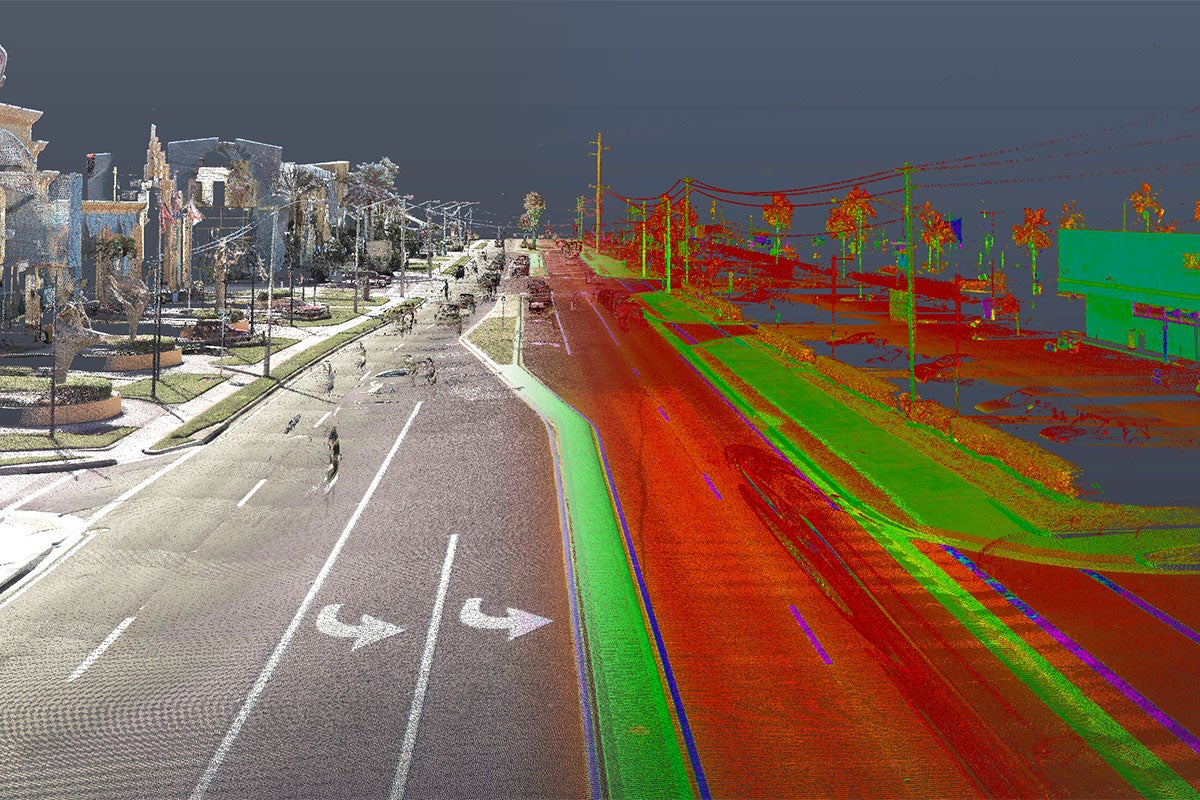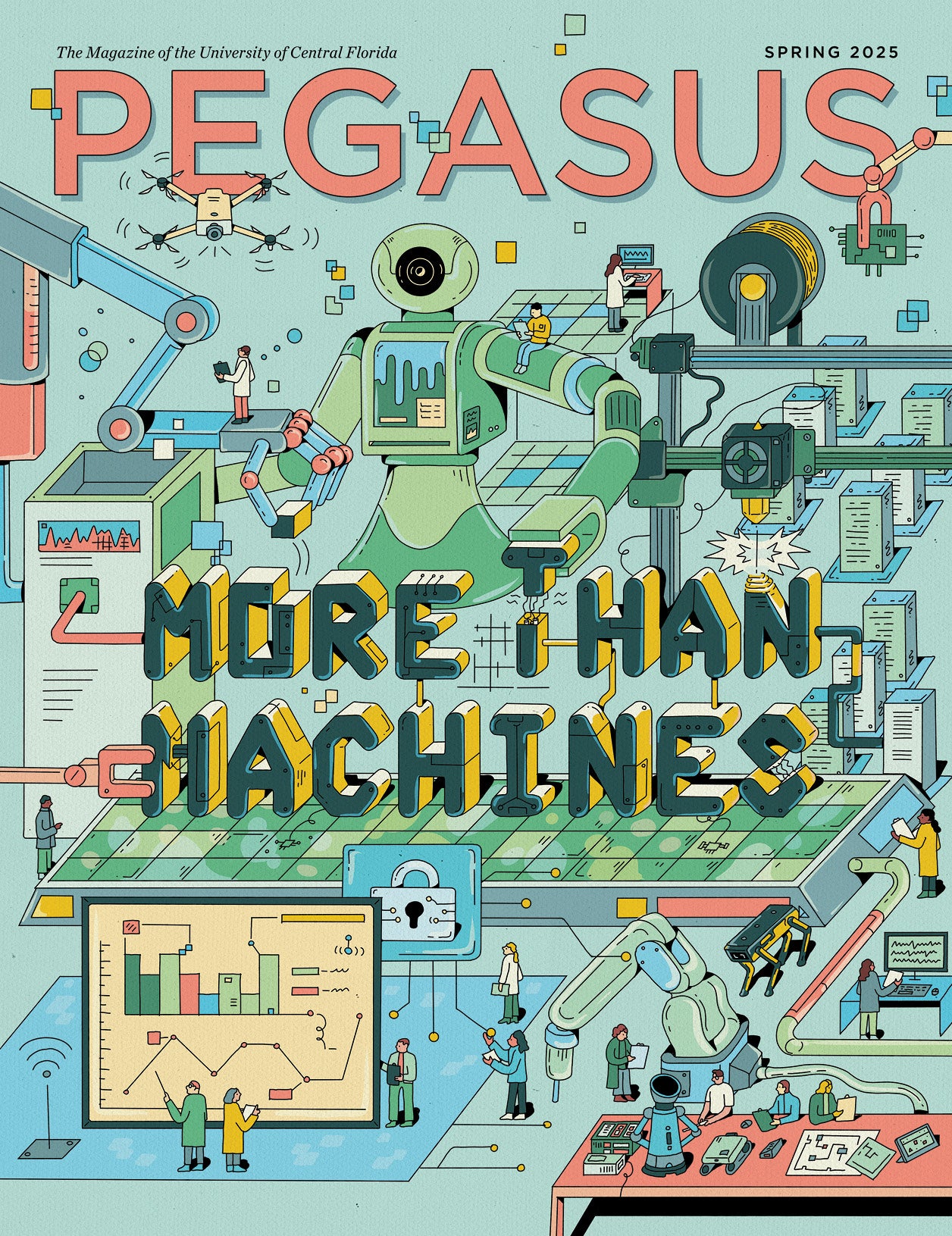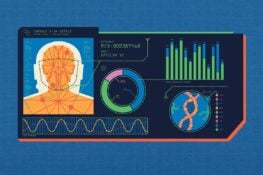Lori Walters and Joseph Kider make an interesting research team at UCF’s School of Modeling, Simulation and Training (SMST). Walters grew up under the blue skies of South Florida. Kider grew up in inner-city Philadelphia. Walters would watch I Dream of Jeannie after school. Kider played baseball with the guys. Walters teaches courses for UCF’s history department and has an admiration for technology. Kider’s a computer science expert and a SMST associate professor who appreciates history.
“I just finished a book about the history of the pixel,” Kider says proudly, before admitting, “I’m not at Lori’s level.”
They even speak different languages.
“When I work with people like Joe,” Walters says, “I have to say, ‘OK, talk to me without the deep computer terminology. I’m an historian here.’”
They exemplify the interdisciplinary spirit of SMST by using what Kider calls “a shared mental model.” Walters might describe an object as shiny while Kider will talk about its specular bidirectional reflectance distribution factor.
“The blend of disciplines is why we’re productive,” Kider says. “We’re artists, philosophers, architects, engineers, historians and computer scientists, all working on big societal applications.”
Walters says it like this: “I can go to smart people like Joe with a cool idea and ask if we can bring it to life.”
Their latest project coming to life is called MemoryScan. Once fully developed, the MemoryScan system will allow end-users to go back in time, through virtual or augmented reality, and experience locations the way they once were. It could be Sunset Strip from 50 years ago or a neighborhood from when your parents were growing up. The pilot project, which could be launched in early 2023, will be a virtual drive through Cocoa Beach, Florida, during the Space Program’s heyday from the 1950s into the mid 1970s.
“MemoryScan is as the name suggests,” says Walters. “It’s using the memories that people have of a location and preserving them as a virtual experience for future generations.”
The project has attracted internal grants from UCF and partnerships with companies like Langan Engineering. Most recently, the National Endowment for the Humanities awarded a grant that will allow MemoryScan to incorporate technology to make it a more vivid experience.
“I’m amazed at how far we’ve come in bringing history to life,” says Walters. It’s an idea that took root in her mind years ago.
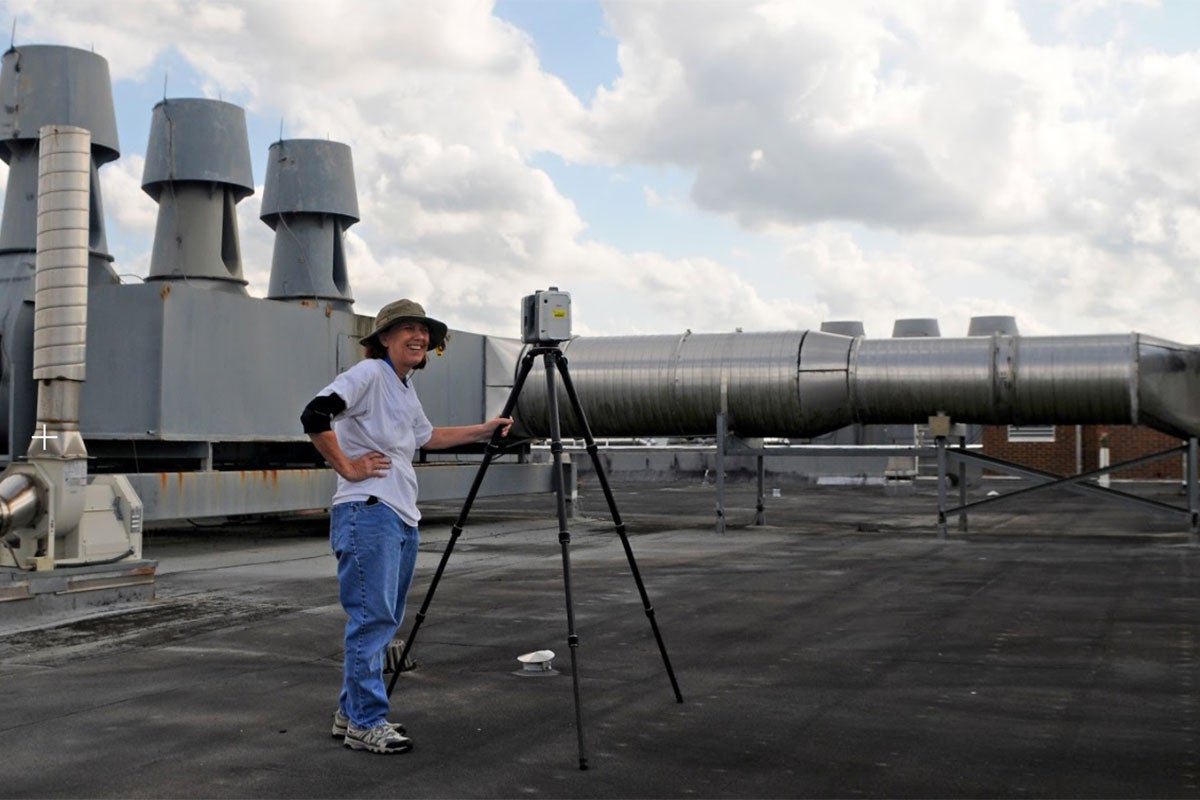
The Seeds of MemoryScan
Before earning a Ph.D. from Florida State, Walters studied at Florida Atlantic where she followed up a bachelor’s in U.S. history with a master’s in the same field. One assignment changed her aspirations: a research paper on anything in Florida intriguing enough to justify 25 pages. Walters remembered a drive north on A1A and seeing Cocoa Beach.
“There were still signs up from the 1960s calling it Missileland, USA,” she says. “So, I thought it would be fun to find out what the area had been like when the space program was growing there.”
Her fascination for the city’s past began. Later, ,she went back to Cocoa Beach to conduct oral histories with people who had worked at Cape Canaveral during the space race. She noticed a concrete ramp, the only remnant of the launch complex where John Glenn made history by rocketing into orbit.
“I wondered how the history might be recreated, so it wouldn’t be lost forever,” Walters says.
A thousand miles away, a high schooler in Philly was getting caught up in another world of wonder: Toy Story.
“The way they made the movie through physics and renderings had an impact on what I’m doing today,” Kider says.
What he’s doing with MemoryScan, specifically, started with a phone call from Walters in early 2021. Walters had been talking with longtime Cocoa Beach residents to preserve their memories through audio recordings and written material. One woman, Vivian Lindauer, took Walters on an unforgettable mental tour of the old Missileland.
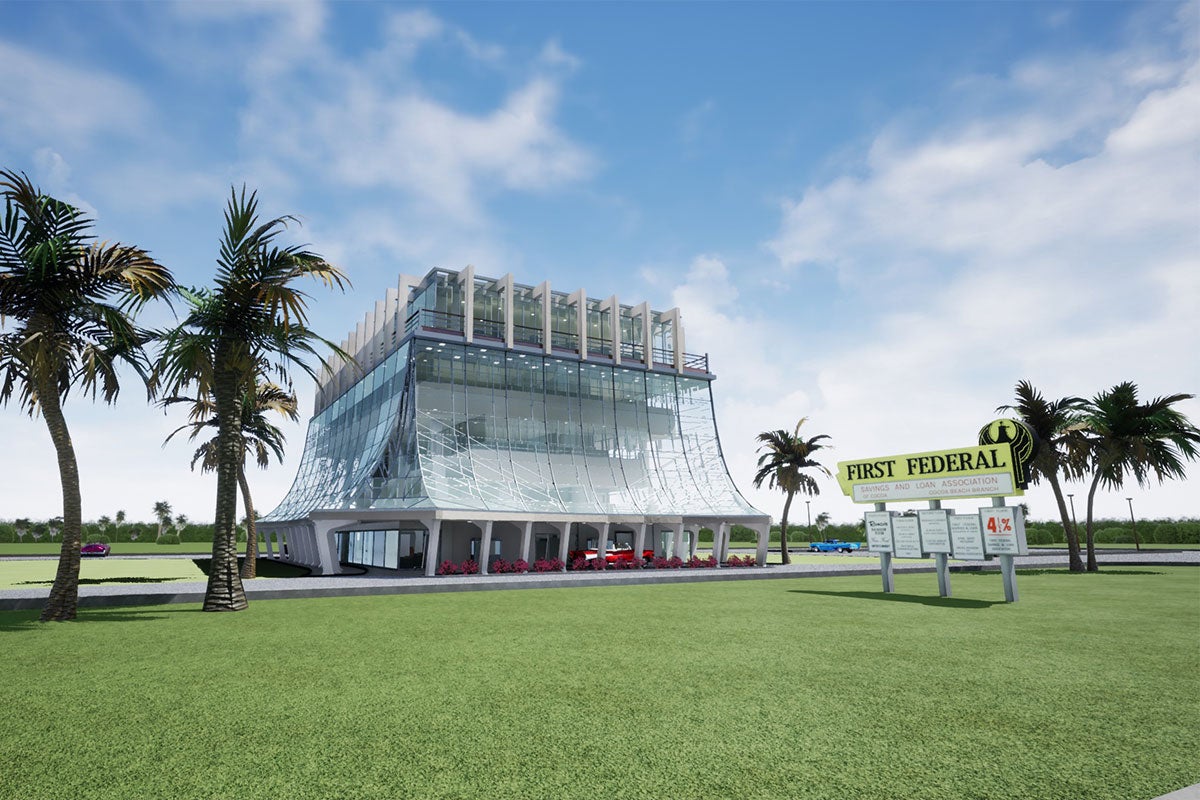
“She went into amazing detail, right down to the furniture and types of calculators that were used in the iconic Glass Bank [formally known as The First Federal Savings and Loan],” Walters says. “Then she closed her eyes and literally described motels to me as if we were driving up A1A 50 years ago. That’s when I thought, ‘This is what has always been missing from oral histories: Put people in a vehicle, drive around and record history as they describe it.”
After mentally cruising the town with Vivian, Walters met with Kider and asked if it could be done. Can we provide people with prompts and take down the memories as they travel around? Can we track not just the words, but the gestures, the vocal inflections and the long pauses at points of interest? Can we capture so much of their memory that the memory then become a virtual experience for others?
Kider said yes. He suggested using devices to track eye and hand movements, cameras, GPS and crystal-clear audio recordings.
“That’s why I like working in SMST with people who love technology,” Walters says. “They find a way.”
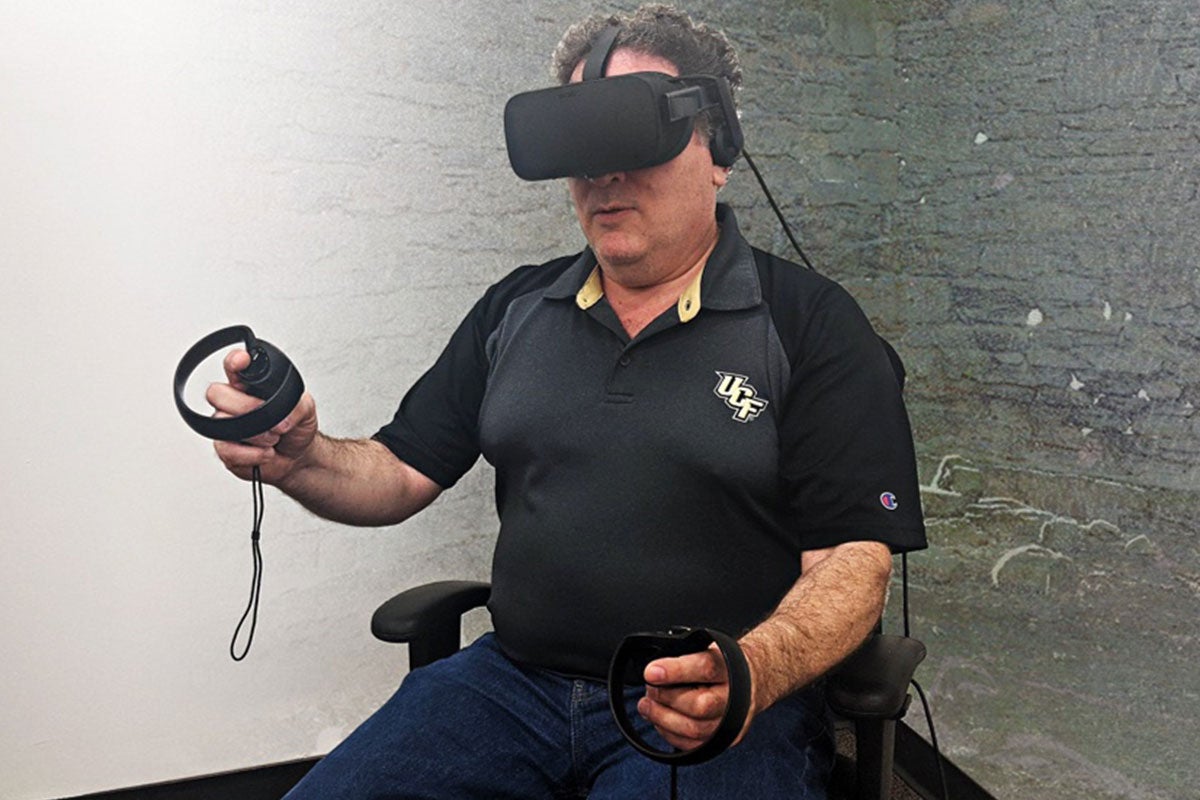
The Future of MemoryScan
During her quest for Cocoa Beach’s experiential history, Walters has collected plenty of mementos. Pictures, blueprints, restaurant menus, hotel logos. They’re used to prime the remembrances of people who were there in the day. The cues are crucial, but the people complete the mosaic.
“They’re the key to everything,” Walters says. “Once they’re gone, any uncaptured memories are gone with them.”
The history of Cocoa Beach and its proximity to UCF have made it an ideal test bed. But Walters and Kider stress that MemoryScan grew from idea to reality because of Vivian Lindauer. When she passed away earlier this year, they gave MemoryScan a code name: Project Vivian.
“Lori always tells me to focus on the people, not on the science,” Kider says. “The code name is a good reminder of that.”
With the funding from NEH, they’ll be able to add depth and vividness to Project Vivian. And then? Walters envisions MemoryScan being used to capture old Miami Beach. Kider imagines his kids seeing where he grew up in Philadelphia.
“As we become older, the memories of our favorite places become more important,” Kider says. “That’s what binds us together because we’re all from somewhere.”
